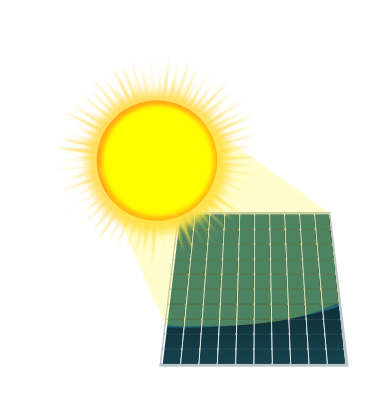

This report makes clear that the tripling target is ambitious but achievable – though only if governments quickly turn promises into plans of action. (emphesis mine)


This report makes clear that the tripling target is ambitious but achievable – though only if governments quickly turn promises into plans of action. (emphesis mine)


Appreciate your view point.
My understanding is that the US is a net fossil fuel exporter with ~10% of exports going to China (source: https://www.eia.gov/tools/faqs/faq.php?id=727&t=6). So that aspect of your argument should probably be reworked.


deleted by creator


Relevant text:
Ukrainian crews say the fundamental problem is that the Abrams were built for advances aided by air power and artillery, which Ukraine lacks.
Russia, meanwhile, continues to make heavy use of drones in its attacks, which the Abrams struggle to defend against.
Interesting read. I’m inclined to agree with the author that the UN 2086 population peak is BS and humanity will hit population peak sooner (potentially in the first half of the century).
United Nations’ expert “model” appears to have picked an arbitrary long-term fertility rate out of who-knows-where to which all regions asymptote, abruptly abandoning their current declines to head for theory-land! I’m honestly a bit aghast.


Just finished V Rising. I really liked it. For those who don’t know and are curious, it’s one of those games where, if you can’t beat a boss, you just have to get better. There’s some small things that make a fight easier, but it basically comes down to you understanding the enemy and learning to play better.


Fixed. Thank you.


Relevant Section on the genetics:
For the study, the researchers took blood from five of the cats, which had been adopted, and conducted a DNA test on four of the felines, which turned up no genetic mutations associated with white fur.
They then performed a whole genome sequencing for two of the cats, and this step turned up a deletion in what’s called the KIT gene, which can encode whether white will turn up in a feline’s coat (scientists have also connected variations in the KIT gene to piebald patterns in various animals like horses and mice.)
“In summary, comparative data from other species and genotype segregation analysis support the newly discovered KIT region deletion as potentially being a cause of salmiak coat color in cats,” the researchers conclude.


Same with golfing, bowling, darts, etc. I think part of the enjoyment of these types of sports/games/competitions is to see how close to perfection you can get.


Good news we are increasing the percent from renewables. The pace leaves something to be desired though:
23 years to increase 12% (2000 to 2023, 18% to 30%)
12 years to increase 10% (2011 to 2023, 20% to 30%)
6 years to increase 5% (2017 to 2023, 25% to 30%)
Based on the charts and write up, it seems like China is the main driver of us even making significant progress.
I’d like to be optimistic but 6 years to go 5% will have us totally renewable in 84 years (2023+[6x14]=2107).


The last paragraph I quoted talks about suburban population transport percentages. So assuming it’s the same for inner Paris, the remainder would be walking and then public transportation.


Some good stats in the article:
… bicycles already surpass cars as a means of transportation in the interior of Paris, accounting for 11.2% of trips compared to 4.3%. A similar trend is seen in trips between the suburbs and the city center: 14% are made by bicycle and 11.8% by car.
Rue de Rivoli, with its two-way cycle lanes and its dedicated lane for buses and taxis …
… Paris has more than 1,000 kilometers (621 miles) of facilities adapted for cyclists, including more than 300 km (186 m) of bike lanes and 52 km (32 m) of provisional lanes, according to the latest available municipal data, from 2021. The rest are lanes shared with cars or lanes only marked with paint on the ground.
By 2026, local officials want the entire city to be suitable for two-wheel transportation. To this end, it has set aside $250 million, $100 million more than in Hidalgo’s first term.
… only 27% of the “bike plan” has been carried out despite the fact that 62% of Hidalgo’s second term in office has already elapsed.
… indicated that 11.2% of trips in Paris were made by bike between 2022 and 2023, compared to 4.3% by car. The change in trend is clear. In 2021, two wheels still represented 5.6% of trips, while cars were 9%, according to Belliard.
… the research indicates that residents of the nearest suburbs also prefer to use the bike, with 14% of trips compared to 11.8% for cars. The figures are even better during rush hour, when 18.9% of trips are made by bike and only 6.6% by car. Travel on foot, however, continues to lead mobility within the municipality with 53%, followed by those made on public transit, with 30%. The study was carried out with 3,337 residents of the capital region who agreed to be fitted with a GPS tracker.


Interesting piece of the journal article:
On the contrary, many analysts reject historical precedents as guides to contemporary policy. Perhaps they should take warning from the aforementioned infamous 1972 Club of Rome/MIT study, Limits to Growth (LTG) [99], which showed that, on a business-as-usual track, global society would face collapse by mid-21st century. As might be expected, many economists and techno-optimists roundly rejected this assessment—economists ignore overshoot and even grossly underestimate the damage from climate change; their concepts and models are divorced from biophysical reality [100]. However, subsequent studies show that the real world is behaving with disturbing fidelity to LTG modelling, particularly the two (of four) scenarios that indicate a halt in growth over the next decade or so, followed by subsequent declines and collapse [101].
[Emphasis mine]
Complete Abstract:
Homo sapiens has evolved to reproduce exponentially, expand geographically, and consume all available resources. For most of humanity’s evolutionary history, such expansionist tendencies have been countered by negative feedback. However, the scientific revolution and the use of fossil fuels reduced many forms of negative feedback, enabling us to realize our full potential for exponential growth. This natural capacity is being reinforced by growth-oriented neoliberal economics—nurture complements nature. Problem: the human enterprise is a ‘dissipative structure’ and sub-system of the ecosphere—it can grow and maintain itself only by consuming and dissipating available energy and resources extracted from its host system, the ecosphere, and discharging waste back into its host. The population increase from one to eight billion, and >100-fold expansion of real GWP in just two centuries on a finite planet, has thus propelled modern techno-industrial society into a state of advanced overshoot. We are consuming and polluting the biophysical basis of our own existence. Climate change is the best-known symptom of overshoot, but mainstream ‘solutions’ will actually accelerate climate disruption and worsen overshoot. Humanity is exhibiting the characteristic dynamics of a one-off population boom–bust cycle. The global economy will inevitably contract and humanity will suffer a major population ‘correction’ in this century.


Other interesting info from the article:
In a new sustainability report, the brand said this was an increase from the 2022 figure, which was 42.6 percent.
Albert Heijn is hoping to significantly increase this number in the coming years. It aims for 50 percent of proteins sold to be plant-based in 2025, going up to 60 percent in 2030.


To add on to what NegativeInf said and linked, “0.25” is a weird way to say a quarter of a day. It makes more sense, to me, that the zero at the front was left off and it should read “0.25-6 hr per day”.


I think this information was already posted a week or so ago, but if you haven’t seen it yet the relevant text is:
Chinese battery giant CATL, supplier to some of Australia’s biggest grid-scale project developers, has unveiled a new containerised battery energy storage system promising a one-third increase in energy density, a 20% reduction in overall footprint and a longer service life.
Stored in a 20-foot TEU container, the mass producible Tener has a 6.25 MWh capacity which CATL says represents a 30% increase in energy density per unit area and a 20% reduction in the overall project footprint.
The new battery also claims to provide zero degradation of capacity over the first five years of use, “a significant advancement”, which CATL says increase the lifespan of batteries.
“Tener is equipped with long service life and zero-degradation cells tailored for energy storage applications, achieving an energy density of 430 Wh/L, an impressive milestone for LFP batteries used in energy storage,” the company says.


A bit disappointing, was hoping for a bigger milestone but this is still a positive.
Relevant Text:
California has set a benchmark for renewable energy, with wind, solar, and hydro providing 100% of the state’s energy demand for 25 out of the last 32 days (and counting).
Added context is that it isn’t for the full day, only needs to be part of the day (ex. 15 minutes), where renewables provided all of the electricity needs for the state.


The text is a bit vague about if this is an 80% cut from the total or 80% cut from the remaining, previously cut fees. Good news regardless though.
Article Text:
The [Biden] administration on Thursday finalized a rule that cuts costs for developing solar and wind energy on public lands.
The rule was expected to cut by 80 percent fees that are based on how much energy is produced through the year 2035.
A partial reduction is already in place based on [2022 guidance], but the administration said that the new rule contains further cuts and codifies them into the federal register.
The fee cuts become less dramatic after 2035 and will ratchet down in the following years to be just a 20 percent cut in 2038 and beyond.
The rule also seeks to expand energy production in designated “priority areas” by simplifying the process for issuing new rights to build wind and solar projects.
The administration announced additional milestones alongside the rule, saying that the Interior Department has now given the OK to enough renewable projects on public lands to power 12 million homes.
Interior Secretary [Deb Haaland] told reporters on a press call that the Biden administration has approved more than double the number of renewable energy projects than the Trump administration did during its four years.
“The previous administration did everything they could to hobble our department’s clean energy program, but we’re making up for lost time,” she said.
In addition to the cost cut and milestone, the administration announced that two major solar projects in California were now fully operational.


Besides the additional Norway airplanes, this was new information to me:
The primary bottleneck to the Ukrainian Air Force’s fielding F-16s in quantity is not limited numbers of airframes but how many combat pilots and ground crew Kyiv can spare from the actual war, to train on transition to the F-16, Cavoli said.
According to Ukrainian mil-bloggers, the first six F-16s with pilots and ground crew will reach Ukraine in June or July. Earlier deadlines had predicted the arrival in April or May.
Relevant text: